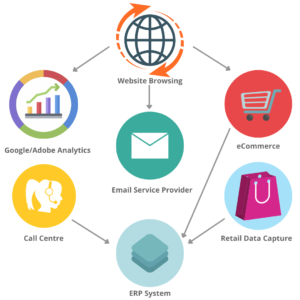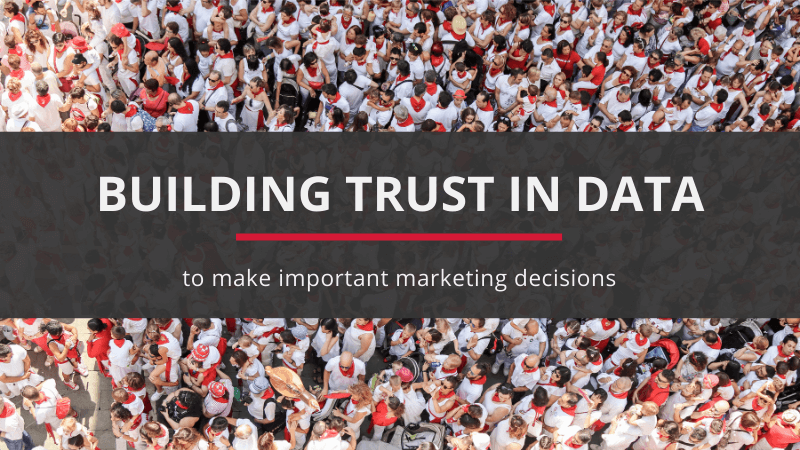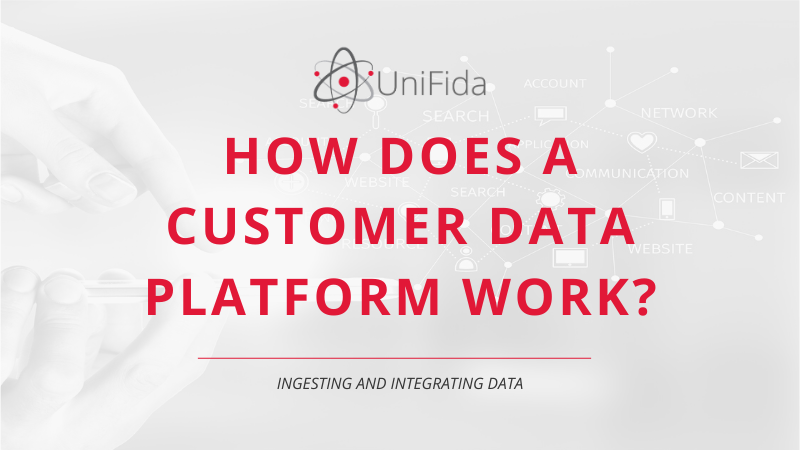We are asking the question because we expect the key currency of the new post-COVID economy will be trust, and trust in data.
Imagine you are amid your biggest campaign of the year, you are explaining the results to your leadership team, and are faced with questions like “how do you know”, “is the data right” or “why didn’t that campaign reach all of our intended audience”? I’m sure you have been in these types of scenario, which happen every day in the life of a marketer.
SnapLogic [1] recently published an intriguing research report on how data distrust impacts analytics projects and decision making, which highlighted:
- 77% of IT decision makers do not completely trust the data in their organisation for accurate, timely, business-critical decision making.
- 76% of IT decision makers report that revenue opportunities have been missed due to a lack of data insights.
- 83% find data is not available at the time it is needed
- 53% of mid-size companies suffer from too many disconnected data sources.
So, we would like to focus attention on some of the key data and insight issues faced by mid-size B-to-C companies in the UK and make suggestions around how they can be resolved.
Our experience is that these problems often have three separate causes:
- Customer data availability and quality
- Availability of skilled data analysts equipped with the right analytical tools
- A failure by the decision makers to frame the right questions for the analyst
Customer data availability and quality
The SnapLogic report reveals that 53% of mid-size companies have too many disconnected data sources, while 40% have poor integration of data sources meaning that data is missing or incomplete.
A typical B-to-C marketing department will often be looking at a distributed data situation with multiple silos like this:

The problem with this configuration is that there is no place for maintaining the overall customer picture, just pieces of the jigsaw in different places. So, it would be well-nigh impossible to answer questions like:
- where am I acquiring my higher value customers from?
- how is my latest email or catalogue campaign performing when most orders are placed without source codes via the website?
- how do I know which of my dormant customers are worth trying to reactivate?
- how many of my orders are coming from customers recruited this year, last year, and the years before?
- how do I understand the ROI I am getting from each acquisition channel?
… and many more.
One solution to the data availability and quality problem is to introduce a customer data platform (CDP) that ingests data from all available online and offline sources and builds a single customer view. Marketers are increasingly focusing on first-party data to drive better customer experiences and marketing outcomes. More than half of marketers surveyed by Winterberry Group say cross-channel audience identification and matching is their highest priority. In fact, investment for identity resolution is projected to reach $2.6B in 2022, according to Forrester Consulting. So, it is no surprise that brands are taking this seriously and most want to create a single customer view.
A major part of what a CDP does is to undertake identity resolution; the process whereby data arriving from different sources is matched together using a range of different personal identifiers such as email, mobile, postal, cookie ID, customer number. The key consideration here is that the CDP needs to maintain for each customer a table of all known personal identifiers so that when a new one is introduced it can where possible be matched in.
The CDP then provides the single central source of truth about customer behaviour from which dashboards can run and analytics can be undertaken; it will also be used for activating multi-channel customer campaigns and for resolving GDPR questions.
Availability of skilled data analysts equipped with the right analytical tools
A large organisation like a bank will have upwards of 50 skilled data analysts, but with many smaller organisations it is often the case that they have one or none and rely on external resources to support them.
There are several reasons for this. Cost is a key factor and linked to that, the difficulty of putting a precise number on the value that a good data analyst can bring. Next the demand for analysis normally fluctuates, and a single analyst would always be facing feast or famine. Also, data analysts usually prefer to work in small teams so that they can discuss problems and learn off each other. Being the only data analyst in an organisation is a lonely position, and often they end up just cranking out reports and become dispirited.
A lot of the reporting can be resolved by introducing dashboarding technology like Tableau or Microsoft Power BI, but these tools still need to be configured to produce the right information.
However, dashboards and data visualisation tools can only take you so far. If you need some more complex analysis, or if for instance you want a propensity model to predict the next best offer to make to each of your customers, then a data analyst becomes essential.
To undertake more complex analysis the analyst will need good tools like SAS, SPSS, or R.
For the smaller organisations, the right solution could then be to outsource to an analysis company or to independent contractors, until demand has grown to a scale where the function can be brought inhouse.
A failure by the decision makers to frame the right questions for the analyst to answer
This issue is less frequently discussed but, in our opinion, not one to be brushed under the carpet.
A considerable amount of the work done by data analysts is wasted because someone does not spend sufficient time thinking about what the real problem is that the analyst should be trying to answer.
Einstein said…
“invention is not the product of logical thought, even though the final product is tied to a logical structure”.
Unravelling this statement in the context of customer marketing, we would suggest that the person who requests the analysis will succeed if they allow their imagination to fire up a range of conjectures that the logical analyst can then set about proving or disproving.
Some analysis is more mundane, but when for instance a business is contemplating several alternative strategic changes then the analyst should look at all the different scenarios that these would potentially deliver, and, as far as possible, provide the business with an understanding of their relative merits.
So, in conclusion…
From our experience it is fair to say that a large proportion, probably more than 50%, of medium size organisations involved in B-to-C marketing that we encounter have their customer data disconnected and spread across multiple systems. This is a problem that can be solved, and the costs are not frightening. A CDP will usually cost no more than 0.5% to 0.75% of sales.
However, setting up from scratch an internal insight and analytics department is challenging, and outsourcing will make economic sense until demand has grown. Also, the outsourced provider should have analysts with a very wide range of experience and skills.
And then how to ask the right questions of the analyst? We would recommend giving the analysts scope to try out different approaches, and to look at different angles to a question. Like this they are far more likely to land on an interesting and valuable solution.
[1] Data Distrust Report – the impact of data distrust on analytics projects and decision making published by SnapLogic in 2020, based on interviews with 300 US and 200 UK IT decision makers.
UniFida is the trading name of Marketing Planning Services Ltd, a London based technology and data science company set up in 2014. Our overall aim is to help organisations build more customer value at less marketing cost.
Our technology focus has been to develop UniFida. Data science business comes both from existing users of UniFida, and from clients looking to us to solve their more complex data related marketing questions.
Marketing is changing at an explosive speed. Our ambition is to help our clients stay empowered and ahead in this challenging environment.




